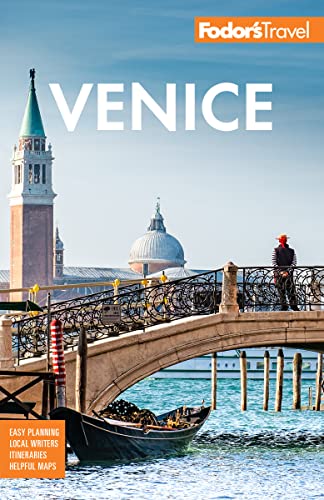Best Festivals in Venice
Carnevale and the Biennale are much-acclaimed events that draw crowds from around the world, but throughout the year, other festivals that are distinctly and uniquely Venetian transform this already magical city into an even more wondrous place.
Festa del Redentore. On the third Sunday in July, crowds cross the Canale della Giudecca by means of a pontoon bridge, built every year to commemorate the doge's annual visit to Palladio's Chiesa del Santissimo Redentore, to offer thanks for the end of a 16th-century plague. The evening before, Venetians—accompanied each year by an increasing number of tourists—set up tables and chairs along the canals. As evening falls, practically the whole city takes to the streets and tables, and thousands more take to the water. Boats decorated with colored lanterns (and well provisioned with traditional Redentore meals) jockey for position to watch the grand event. Half an hour before midnight, Venice kicks off a fireworks display over the Bacino, with brilliant reflections on its waters. You'll find good viewing anywhere along the Riva degli Schiavoni; you could also try Zattere, as close to Punta Dogana as you can get, or on the Zitelle end of the Giudecca. After the fireworks, join the young folks and stay out all night, greeting the sunrise on the Lido beach, or rest up and make the procession to mass on Sunday morning. If you're on a boat, allow a couple of hours to dislodge yourself from the nautical traffic jam when the festivities break up.
Festa della Madonna della Salute. This thanksgiving festival celebrates not a harvest, but survival. Every November 21, Venetians make a pilgrimage to the church of Madonna della Salute, where they light candles to thank the Virgin Mary for liberating the city from the plague of 1630–31 and to pray for health in the year to come. It was while the plague was raging that the church was commissioned, but before the saint could intervene, nearly one third of the city's 145,000 inhabitants were dead. To make the pilgrims' progress more expedient, a temporary bridge is erected across the Grand Canal between Campo Santa Maria del Giglio (near the Gritti Palace hotel) and the sestiere of Dorsoduro. The weather is usually cold and foggy, and the winter season is traditionally ushered in with a traditional stew called castradina. Outside and to the back of the church is a carnival-like atmosphere, with frittelle (fritters), palloncini (balloons on strings), clowns, and votive candles.
Festa della Sensa. The oldest Venetian festival, the Festival of the Ascension, was initiated by Doge Pietro Orseolo II in the year 1000, after he led the Venetian fleet to victory over the Slavic pirates (who had invaded the Istrian-Dalamatian coast) on Ascension Day. Originally the Ascension was a very simple ceremony in which the doge led a procession of boats to the entrance of the port of San Nicolò di Lido to meet the religious leader of the period, the bishop of San Pietro di Castello, who blessed the waters as a sign of peace and gratitude.
In the days of the Republic, the Ascension began with a series of performances and celebrations that went on for 15 days and culminated with a large fair in Piazza San Marco. Today the Ascension is held on the Sunday following Ascension Day, the Thursday that falls 40 days after Easter, and begins at about 9 am with a procession of Venetian-oared boats led by the mayor in the Serenissima, who tosses a ring into the water and pronounces the ritual phrase "In segno di eterno dominio, noi, Doge di Venezia, ti sposiamo o mare!" (As a symbol of our eternal dominion, we wed you, o sea!). Masses in the Chiesa di San Nicolò and boat races follow later in the afternoon. In the Sala del Maggior Consiglio in Palazzo Ducale, you can see several objects that are part of the ceremony, such as the thick candle, the umbrella, the gilded throne, and the eight white, red, blue, and yellow banners. The Museo Storico Navale has an 18-foot-long scale model of the gilded boat once used by the doge.
Festa di San Marco. The festival honoring the evangelist who for 1,000 years protected his city is somewhat eclipsed by the fact that April 25 is also Italian Liberation Day, a national holiday. On St. Mark's Day men traditionally buy boccoli (red roses) for ladies in their lives (wives, mothers, sisters, cousins, friends)—the longer the stem the deeper the token of love. Legend tells of a soldier enamored of the doge's daughter who was mortally wounded in a far-off battle. As it spilled, his blood was transformed into red roses, which he entrusted his companion to bring to the girl. The story doesn't say if the flowers arrived on the saint's day, but by tradition Venetians celebrate the miracle on this date.




